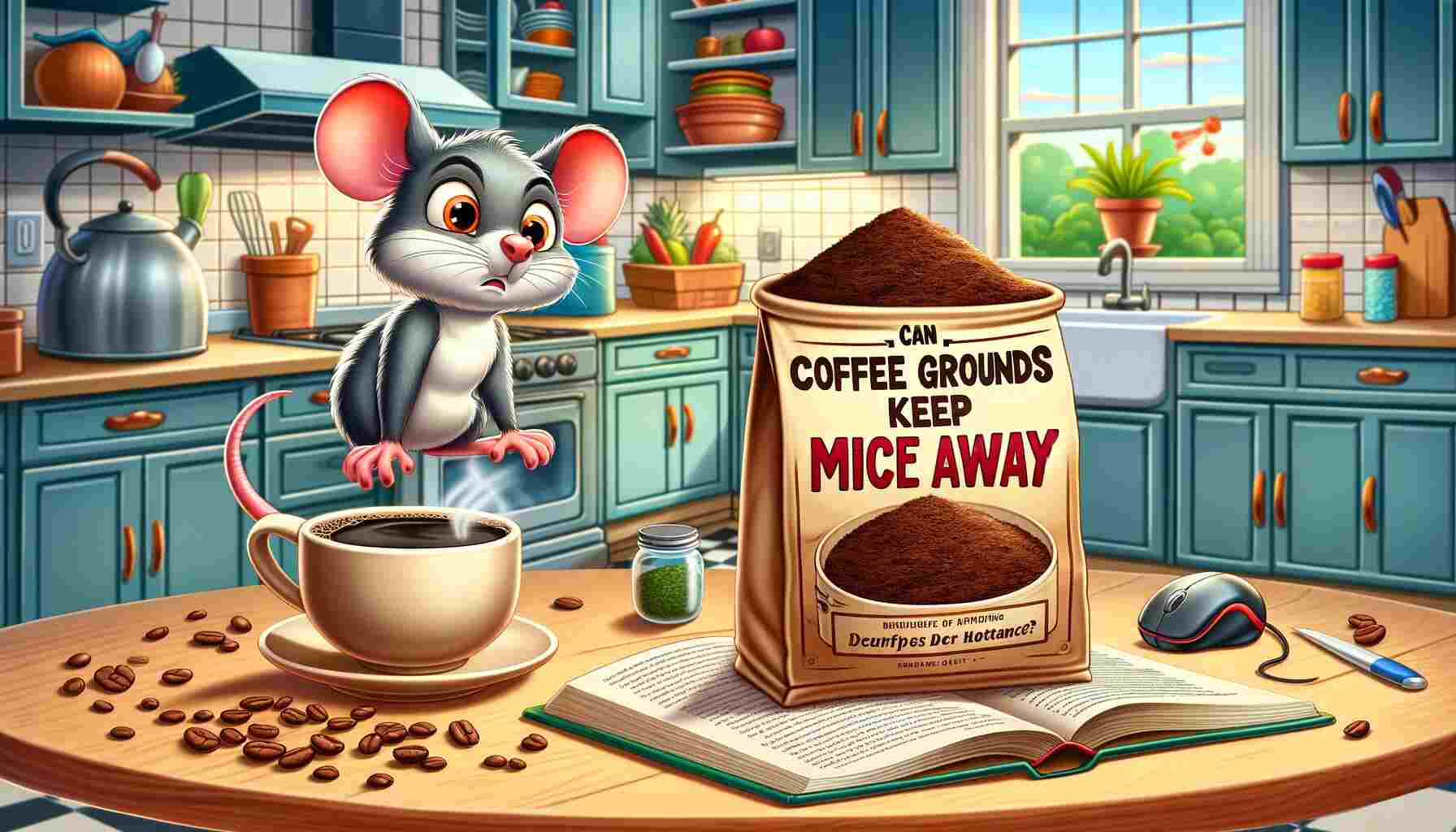Coffee grounds, those aromatic remnants of our morning brew, have been rumored to have a plethora of uses beyond making your daily cup of joe. One such claim is that coffee grounds can keep mice away. But is this idea grounded in reality, or is it just another old wives’ tale? In this article, we’ll delve deep into the world of coffee grounds and their supposed mouse-repelling properties to separate fact from fiction.
The Mouse Problem
Before we get into the coffee grounds solution, let’s first understand the problem at hand. Mice are unwelcome guests in many households, known for their tendency to chew through wires, contaminate food, and spread diseases. Naturally, we are always on the lookout for effective ways to keep these pests at bay.
The Coffee Grounds Theory
The theory behind using coffee grounds as a mouse repellent revolves around their strong scent. Coffee has a potent aroma that many humans find delightful, but it seems that mice, on the other hand, are not fans of this particular fragrance. Proponents of this method suggest that spreading coffee grounds in and around areas where mice are active can deter them from entering or staying in your home.
Investigating the Claim
To determine whether coffee grounds can indeed repel mice, let’s break down the science and gather information from credible sources.
The Scent Theory
Coffee grounds do emit a strong, distinctive odor. This smell comes from compounds like caffeine, which is known to have a bitter taste and strong aroma. Some people believe that this smell, when present in high concentrations, can be unpleasant for mice and deter them.
Credible Scientific Studies
There isn’t a substantial body of scientific research specifically addressing coffee grounds’ effectiveness as a mouse-repellent. This lack of scientific evidence leaves the claim in a gray area.
Anecdotal Evidence
While there may not be scientific studies supporting the coffee grounds method, there are numerous anecdotes from homeowners who claim success in using coffee grounds to keep mice away. These anecdotes should not be dismissed outright, as they suggest there might be some validity to the idea.
The Limitations
It’s essential to recognize the limitations of using coffee grounds as a mouse repellent. The scent of coffee grounds is not a foolproof method, and its effectiveness can vary from one situation to another. Factors such as the severity of the mouse infestation, the specific type of mouse, and the availability of other food sources can influence the outcome.
How to Use Coffee Grounds as a Mouse Repellent
If you decide to give coffee grounds a try, here’s how to do it effectively:
- Collect Used Coffee Grounds: Save the used coffee grounds from your morning brew. You can also ask for coffee grounds at your local coffee shop.
- Dry the Grounds: Spread the used coffee grounds on a tray or baking sheet and allow them to dry thoroughly. Dried coffee grounds are easier to handle and spread.
- Place Them Strategically: Identify the areas where mice are active or likely to enter your home. Common entry points include cracks, crevices, and gaps around doors and windows. Sprinkle the dried coffee grounds in these areas.
- Monitor and Reapply: Check the coffee grounds regularly and reapply as needed. Rain and humidity can reduce their effectiveness over time.
The Final Verdict
While coffee grounds may have some potential as a mouse repellent, it’s essential to approach this method with realistic expectations. The evidence supporting their effectiveness is largely anecdotal, and the results can be inconsistent. If you have a severe mouse problem, it’s advisable to use more proven methods such as traps, sealing entry points, or seeking professional pest control assistance.
In summary, coffee grounds might offer a creative and eco-friendly approach to keeping mice away, but it’s not a guaranteed solution. If you’re a coffee lover, repurposing your used coffee grounds in this way is worth a try, but don’t rely solely on this method to solve a serious mouse infestation.
Remember, when dealing with pest control, it’s crucial to prioritize the health and safety of your family and pets. If the problem persists or worsens, consult with a pest control expert for a more comprehensive solution.
Other Natural Mouse Repellents
If the idea of using coffee grounds doesn’t quite convince you, there are other natural mouse repellents you can explore:
- Peppermint Oil: The strong scent of peppermint oil is believed to repel mice. Place cotton balls soaked in peppermint oil in areas frequented by mice.
- Cats: If you’re a cat owner or willing to adopt one, these natural hunters can help keep mice at bay through their presence alone.
- Ultrasonic Repellent Devices: These electronic devices emit high-frequency sounds that are unpleasant for mice but harmless to humans. They can be a more modern and reliable option.
In the end, the quest to keep mice away might require a combination of methods tailored to your specific situation. Experiment with different approaches, and you’ll hopefully find a solution that works for you.
Conclusion
The idea of using coffee grounds to repel mice is an intriguing one, backed by anecdotal evidence but lacking extensive scientific support. While it might not be the most foolproof method, it’s worth trying if you’re looking for natural and eco-friendly ways to address a minor mouse problem. However, for more severe infestations, it’s advisable to explore other proven pest control methods or consult with a professional exterminator.
Ultimately, the battle against household pests like mice often requires a multi-pronged approach. Keep an open mind, stay informed, and be ready to adapt your strategy to effectively protect your home and family from unwanted rodent guests. And remember, whether it’s coffee grounds or other methods, the key is to find what works best for you and your unique situation.
Going back to my own experience with coffee grounds I can say that I had little success but it does work better when mixed with other methods.








